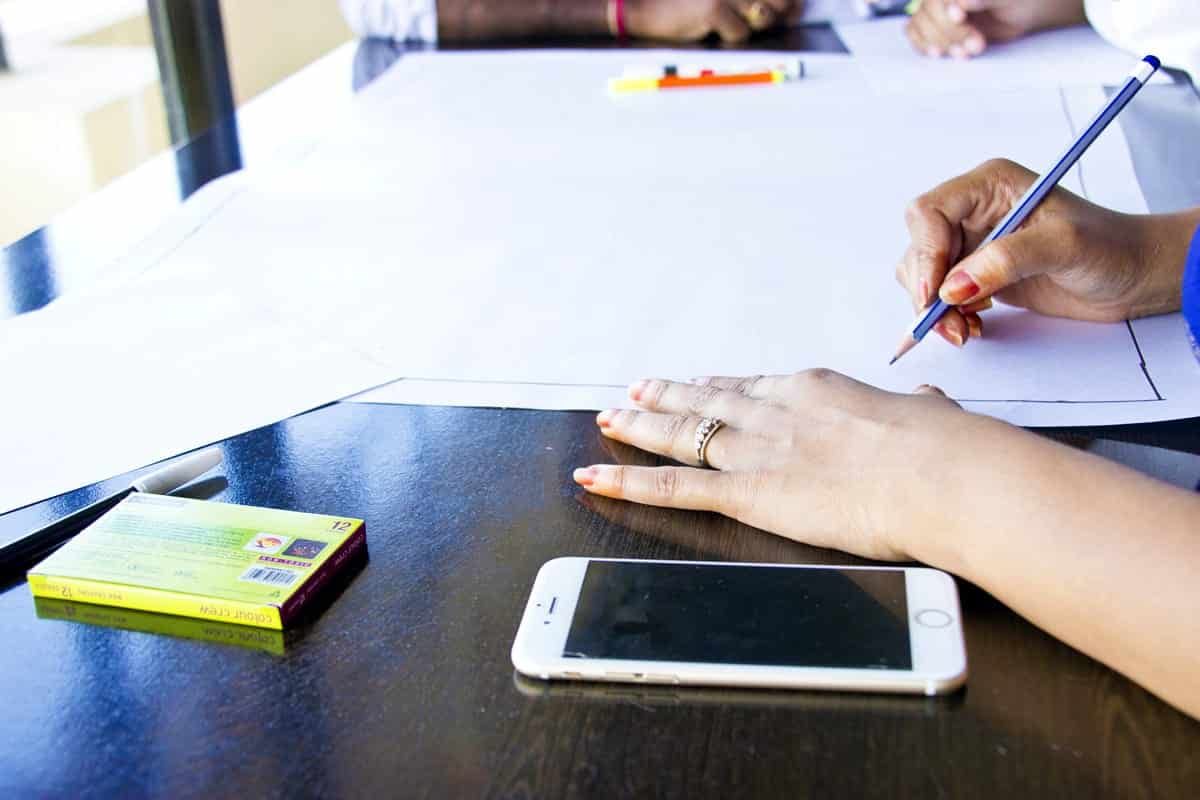For mobile app designers, learning from failure is practically a rite of passage. We dive headfirst into projects we think are going to change the world, and then realize that they’re never going anywhere. We come up with solutions that seem elegant and stylish — and look back on how clumsy they were later. We take shortcuts that end up making extra work for ourselves. Sometimes we laugh at our mistakes, other times we mourn missed opportunities, but we move on and become better mobile app developers.
And that’s good — we all have to learn from our mistakes if we want to improve our skills and further our design careers. But if you can learn from someone else’s mistakes, and do better on your first try, that’s a shortcut every designer should try to take.

To help you fast-forward past a few pitfalls, we asked innovative mobile app design and development professionals to think back to when they were first starting out, and give their past selves some advice. Here’s what they came up with.
Codementor — Learning the Basics
In the fast-paced world of mobile app design, no one person can learn everything. There are always more languages, tools and technologies to explore. Having quick access to a talented pool of mobile designers and developers is a must, particularly for lean development companies that may not be able to keep all their skills in-house.
Codementor is a great tool to gain access to app talent, whether you’re looking for someone to help you brush up on your Xcode skills, or you need a new Ruby developer to round out your team. Codementor is the world’s largest developer marketplace for live mentorship. They offer access to a huge range of highly-skilled freelancers, and a vibrant community for learning, teaching and sharing ideas.
Eric Lee, the developer of the Codementor app, has some great tips for his younger self that apply to anyone setting out in mobile app development and design careers:
First, learn and understand the basics (e.g. language and framework etc.) well. Don’t just get something to work, actually stop and figure out why it works. Second, never stop learning new tech, frameworks, and libraries — but don’t rush to squeeze everything in to every app you make.
Don’t forget to write tests and pick apart your own code — and always make sure to respect feedback from your users. Understand that your users can be very different people from you, and your instinct for design isn’t always accurate. Likewise, learn to work with other people and learn from them.
Finally, never stop reading, and analyzing other developers’ code. You never know what you can find that might be useful to you!

Unearth Chief Design Officer — Making the Journey
Apps have done a lot to change the way we and interact with the physical world around us. We tend to take it for granted that we can instantly find the quickest route to a new location, call up results for the nearest gas station, get a reasonably accurate weather prediction for our neighborhood, or take a street level tour of a city on the other side of the world.
You’d think this new technology would transform the construction industry, but it’s been slow to adapt. Surveying, planning and building is still a painstaking process, generally using a paper-based workflow. Companies still face unpredictability, low profit margins, cost overruns and construction delays.
Unearth set out to modernize the entire construction process, from product planning through completion. It integrates drone-based aerial imagery with ground-based observations to enable companies to more effectively plan and accurately chart progress. Those tools are combined with sophisticated project management, materialization, visualization and other resources to create a powerful construction platform.
If that sounds ambitious, well, it is — and the company didn’t get it all right on the first try. In fact, their story starts with failure.
“You have to suck at something before you can be great at it. We are no exception. After wrecking multiple drones, sometimes in spectacular fashion, we took flight with a revolutionary new innovation based on the power of drone-provided data. Confounded by the challenge of turning thousands of aerial photographs into useful insights, and the overstated promises of drones as a panacea for construction’s ills, we saw our opening,” says Unearth Co-Founder and Chief Design Officer, Nate Miller.
“If we could give construction teams both breadth and depth insights, we could turn drones into the incredible tools they were promised to become. That’s how our software revolutionizes construction: by collecting detailed information and hosting the analytics/collaboration needed to make use of it.”
Miller has more than a decade of experience designing and developing mobile apps across a range of industries, but has made it a point to hang onto the joy and passion he felt when he was new to the app industry. Miller would make it a point to tell his younger self to hold on to that feeling:
“Do you remember the first time you proudly shared something you made with someone else? Do you remember what came before that moment — the daylight hours quickly melting into early morning, the many StackExchange threads consumed and considered, the never-ending dialogue with the Google search bar culminating into that one joyous moment we shared our creation? Hold that memory close and never let it leave you. When you doubt yourself and rationalize all the reasons you’re not cut out for this, remember that moment and take another step forward.”

Airo — Understanding Your Client’s Needs
Wearable healthcare technology often poses complex challenges for app designers. Tracking biorhythms alone can provide interesting insights, but those insights in and of themselves won’t necessarily make the user healthier — it takes the right UX.
This is particularly true when you’re developing tools to manage chronic conditions, or improve health before it becomes a disease. If your device screens the user for a specific disease, most of the magic is in the wearable — all the app needs to do is inform them that they need to see a doctor. But if you’re trying to reduce a risk factor by changing daily habits, you’re asking a lot more of your users. To succeed, your app needs to get them to restructure their lifestyle in some pretty profound ways, for results that won’t be immediately tangible. That takes top notch mobile app design.
Airo Health is an extremely promising approach to the problem of helping users change their lives. Designed to help the user detect and relieve anxiety, it uses a wearable device to detect Heart Rate Variability (HRV). As the name implies, HRV measures variations in your heart rate, and uses those changes to infer the balance between your parasympathetic nervous system (active during “rest and digest” situations when you are calm) and your sympathetic nervous system (associated with “fight or flight” responses).
Airo measures your mental state over time and reacts to changes to help you reduce stress and boost performance. When you’re under stress, it alerts you, and recommends breathing exercises tailored to your personal data, which you can use to help reduce stress quickly. It also charts moments when you were performing at your best, so you can track the factors that help you stay focused and avoid stress triggers.
Naman Kumar, founder of Airo, isn’t a first-time app developer. In fact, he’s been making apps for over 10 years, and used his coding skills to pay his way through college at the University of Waterloo, before winning Y Combinator backing to start Airo. It seems like his younger self did pretty well, but he still has some great, practical advice for aspiring mobile app designers:
Figure out whether you need a prototype or a full-blown product. The two have very different complexities and time commitments. If a young app designer doesn’t differentiate properly, she can end up in hot water with the client (the client expects one product, you deliver another) and a lot of frustrations (client is only expecting a prototype, yet you deliver a fleshed-out product). Always make sure you’re developing for what your user — or client — wants.

Believe in What You’re Doing
Mobile app design is hard work, and it comes with a lot of risk. One angel investor or lucky break can mean the difference between creating a unicorn and toiling in obscurity. The most important advice of all is to stick with it and believe in yourself — you can’t expect others to believe in you if you don’t believe in yourself. But if you work really hard and follow your passion, we have no doubt you’ll accomplish great things.
Proto.io lets anyone build mobile app prototypes that feel real. No coding or design skills required. Bring your ideas to life quickly! Sign up for a free 15-day trial of Proto.io today and get started on your next mobile app design.
Got any tips you wish you’d heard at the beginning of your mobile app design career? Let us know by tweeting us @Protoio!





